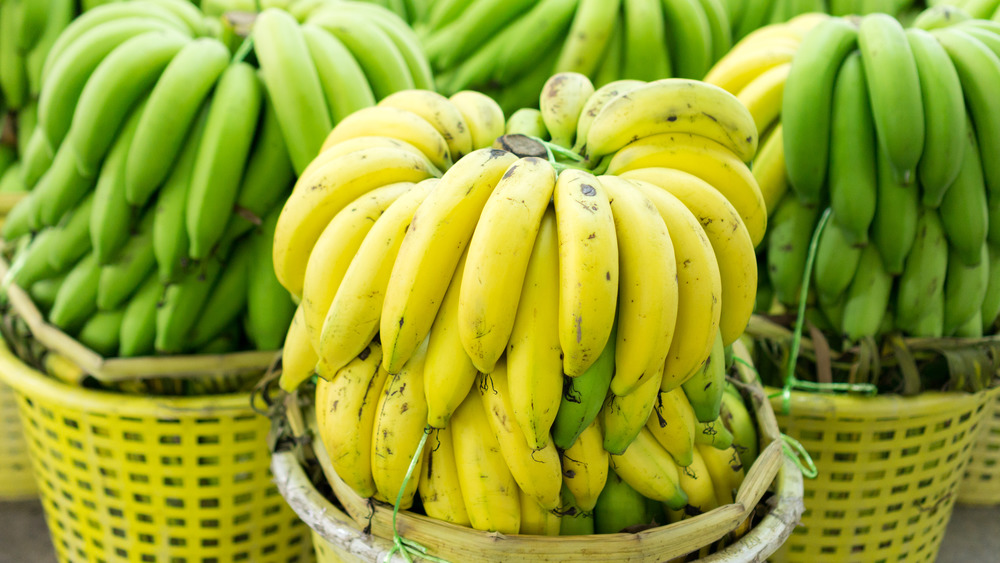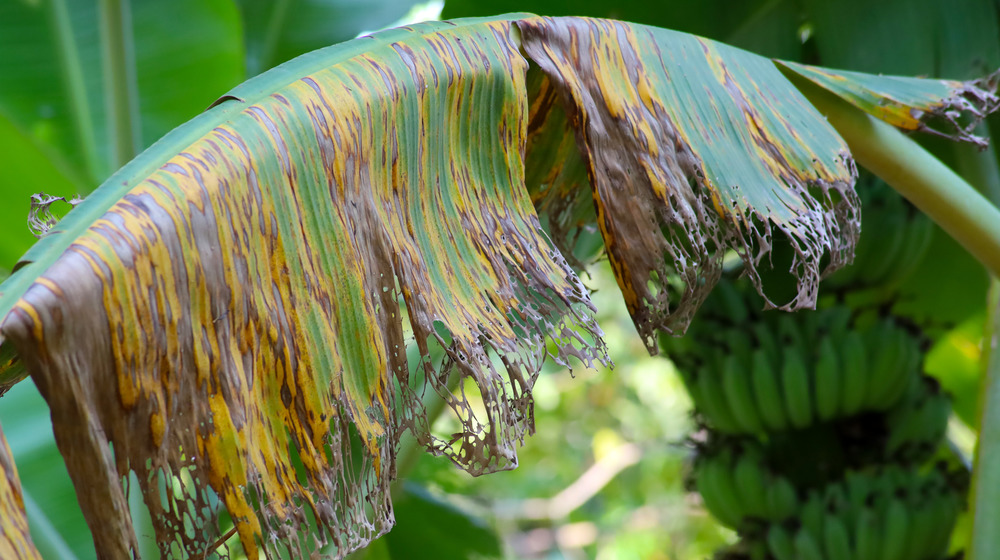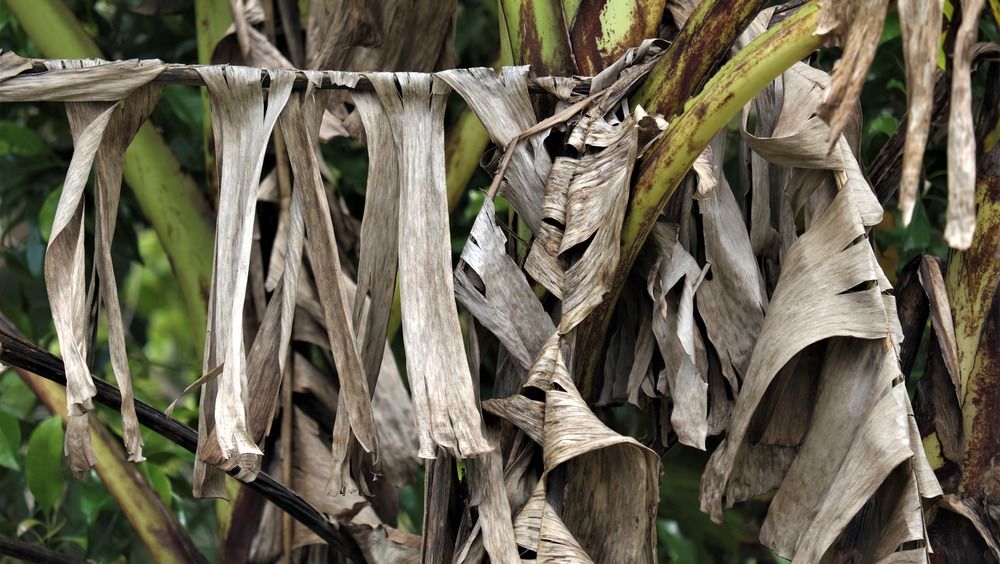There Might Soon Be A Shortage Of Bananas, And It Has Nothing To Do With COVID
A banana that's ripe for eating looks mellow yellow. But at its economic peak, the fruit's true colors are dollar-sign green and in the black. As the American Journal of Transportation punnily observes, this monetary rainmaker has long reigned as the "top banana" of globally exported perishable goods. In 2019, bananas were traded internationally to the tune of 20.2 million metric tons – more than any other fruit or vegetable – and raked in roughly $14.7 billion. People ought to start calling the top earner in a household the "banana breadwinner" just to give this crop its props.
In some ways, the booming banana trade spreads edible happiness. After all, bananas are basically nature's smile: bright, sweet, and curved just like the joy they put on people's faces. And banoffee pie is the greatest thing since sliced banana bread. But oftentimes the world turns nature's smile downside-up. Bananas have a starkly dark past, and their future might be blighted by a fungal menace known as Tropical Race 4 (TR4).
TR4 infects banana plants through the soil and basically chokes them to death by blocking their vascular systems. According to the government of Queensland, Australia, TR4 can spend decades lurking in soil and is virtually undetectable until banana plants exhibit symptoms. Previously green leaves turn almost entirely yellow with brown edges before falling like autumn and "forming a skirt of dead leaves around the lower part of the plant."
Make like a banana tree and leave
TR4 is an offshoot of the Panama disease, which brought the banana industry to its knees in the 1950s. Up to that point, the most commercially viable variety had been the "Big Mike" (Gros Michel) banana. But producers were forced to unceremoniously drop the Big Mike as the fungus Fusarium oxysporum f.sp. cubense caused banana plants to wilt and reduced plantations to shriveled commercial husks of their former selves. The fall of the Big Mike precipitated the rise of the Cavendish banana, which accounts for around 99 percent of banana exports nearly half of all global banana production, according to Smithsonian magazine.
The Big Mike and its successor share the same Achilles heel: They're monocultures. Daniel Bebber of the University of Exeter's BananEx research group explained to Time that this means each Cavendish crop is "genetically identical" and thus susceptible to the exact same diseases. Lamentably, the Big Mike, Cavendish, and as much as four-fifths of all other cultivated banana varieties are vulnerable to TR4.
During a 2008 broadcast of Fresh Air, author Dan Koeppel warned that "It only takes a single clump of contaminated dirt, literally, to get this thing rampaging across entire continents" (via NPR). Dan Koeppel said every banana scientist he consulted told him "it's not an 'if,' it's a 'when,' and 10 to 30 years." Bananas are essentially fleshy yellow dominos waiting to be toppled, and unfortunately, they may have reached the tipping point.
Bananas are in a bunch of trouble
Writing for the BBC's Follow The Food series, Luise Gray characterizes TR4 as COVID-like in that it's currently incurable, wreaks vascular havoc, and has begun spreading on a pandemic scale. In the 1990s, the fungus took root in Asia, where the first cases were spotted in Taiwan, per the American Journal of Transportation. The first known case outside of Asia occurred in Jordan in 2013. It has reached more than 20 countries, including India, the largest producer of bananas on the planet, according to a 2020 paper published by Nature. Many Indians rely on bananas as a dietary staple, and the Cavendish makes up roughly 70 percent of the nation's banana production.
Deutsche Welle reported in 2015 that scientists were sounding the alarm about the possibility of the illness reaching Latin America, which grew an estimated 80 percent of the world's Cavendish exports at the time. In 2019, TR4 officially landed on Colombian soil. If you're reading the banana leaves, it's easy to see the spores of economic turmoil germinating.
As the fungus spreads, producers will be forced to quarantine bananas and pare down production. While estimates of the financial damage are sparse, ProMusa says based on available data, Taiwan has taken a $253 million hit, Indonesia suffered a $121 million setback, and Malaysia lost about $14 million. There's no telling exactly when a shortage might strike, but banana lovers would do well to brace themselves for a sucker punch.


